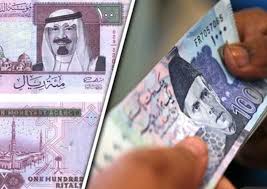Riyal to PKR
The exchange rate between the Saudi Riyal (SAR) and the Pakistani Rupee (PKR) is a critical economic metric that affects the financial landscape of both Saudi Arabia and Pakistan. This dynamic is significant not only for governments and businesses but also for expatriates, investors, and anyone engaged in cross-border transactions. Understanding the factors influencing the Riyal to PKR exchange rate, historical trends, and the implications of currency fluctuations is essential for making informed financial decisions.
Factors Influencing the Riyal to PKR Exchange Rate
Economic Stability and Performance:
The economic health of both countries plays a crucial role in determining the exchange rate. Saudi Arabia’s economy is heavily dependent on oil exports, while Pakistan’s economy is more diversified but faces challenges such as political instability and trade deficits. Strong economic performance in Saudi Arabia typically strengthens the Riyal, whereas economic difficulties in Pakistan can weaken the Rupee.
Oil Prices:
As one of the world’s leading oil producers, Saudi Arabia’s economic fortunes are closely tied to global oil prices. When oil prices are high, the influx of revenue strengthens the Saudi economy and, by extension, the Riyal. Conversely, a drop in oil prices can weaken the Riyal, impacting the SAR to PKR exchange rate.
Remittances:
Pakistan receives significant remittances from its expatriates working in Saudi Arabia. These remittances provide a steady inflow of foreign currency, supporting the Pakistani Rupee. Any changes in labor policies or economic conditions in Saudi Arabia affecting expatriates can influence remittance flows and subsequently the exchange rate.
Monetary Policies:
The central banks of both countries play a vital role in managing their respective currencies. Interest rate adjustments, inflation control, and foreign exchange reserves management are tools used by the Saudi Arabian Monetary Authority (SAMA) and the State Bank of Pakistan (SBP) to influence exchange rates.
Political Stability:
Political events and stability in both countries significantly impact investor confidence and currency strength. The political unrest or uncertainty in Pakistan can lead to a depreciation of the Rupee, while stable governance in Saudi Arabia generally supports the Riyal.
Historical Trends
Historically, the SAR to PKR exchange rate has seen significant fluctuations, reflecting the economic and political landscapes of both countries. Over the past decade, the Pakistani Rupee has generally depreciated against the Saudi Riyal, influenced by factors such as rising inflation, political instability, and economic challenges in Pakistan. On the other hand, the Saudi Riyal has remained relatively stable due to Saudi Arabia’s robust economic management and substantial foreign exchange reserves.
Recent Developments
During the pandemic, the demand for oil plummeted, impacting Saudi Arabia’s revenue and consequently the strength of the Riyal. However, the subsequent recovery in oil prices and economic activity has helped stabilize the Riyal. Pakistan, meanwhile, has faced challenges such as rising inflation and external debt, putting pressure on the Rupee.
Implications of Exchange Rate Fluctuations
Trade and Investment
Fluctuations in the SAR to PKR exchange rate impact bilateral trade and investment flows. A stronger Riyal makes Saudi imports more expensive for Pakistan, potentially leading to a trade imbalance. Conversely, a weaker Rupee can make Pakistani exports more competitive but can also increase the cost of repaying foreign-denominated debt
Expatriates and Remittances
For Pakistani expatriates in Saudi Arabia, the exchange rate determines the value of their remittances. A stronger Riyal means more PKR for each Riyal sent back home, providing financial relief to families in Pakistan and supporting the domestic economy.
Foreign Exchange Reserves
Both countries need to maintain adequate foreign exchange reserves to stabilize their currencies. For Pakistan, remittances from Saudi Arabia are a vital source of foreign currency, helping to bolster reserves and support the Rupee.
Consumer Prices
Exchange rate movements can directly affect consumer prices in both countries. A weaker Rupee can lead to higher import costs, fueling inflation in Pakistan. Similarly, fluctuations in the Riyal can impact the cost of imported goods in Saudi Arabia.
Future Outlook
Predicting the future trajectory of the SAR to PKR exchange rate involves considering various economic, political, and global factors. Continued reliance on oil revenues makes Saudi Arabia vulnerable to global oil price fluctuations. Diversification efforts under initiatives like Vision 2030 aim to reduce this dependency, potentially leading to a more stable Riyal in the long term.
For Pakistan, addressing economic challenges such as inflation, external debt, and political instability is crucial for stabilizing the Rupee. Enhancing export competitiveness, attracting foreign investment, and maintaining strong remittance flows are essential strategies for improving the exchange rate scenario.
Conclusion
The exchange rate between the Saudi Riyal and the Pakistani Rupee is influenced by a complex interplay of economic, political, and global factors. Understanding these dynamics is essential for stakeholders ranging from policymakers to expatriates. By closely monitoring economic indicators and adopting prudent financial strategies, both countries can navigate the challenges and opportunities presented by exchange rate fluctuations, ensuring economic stability and growth in the years to come.
